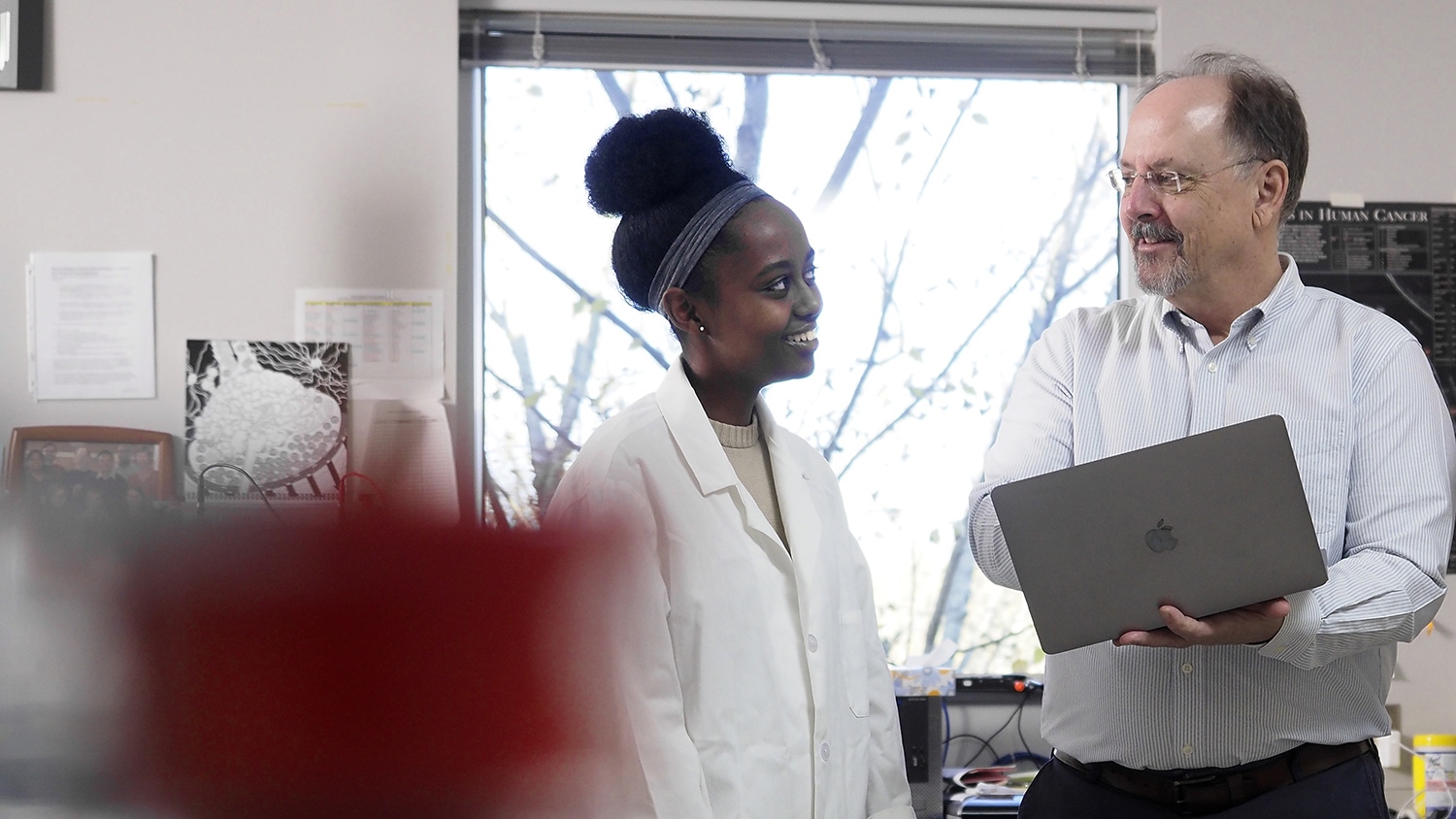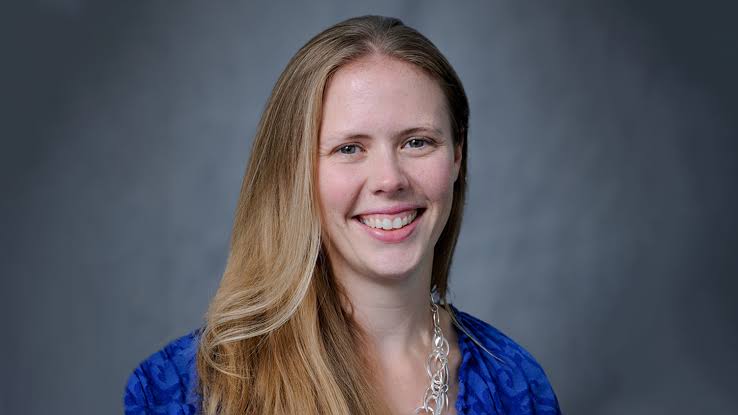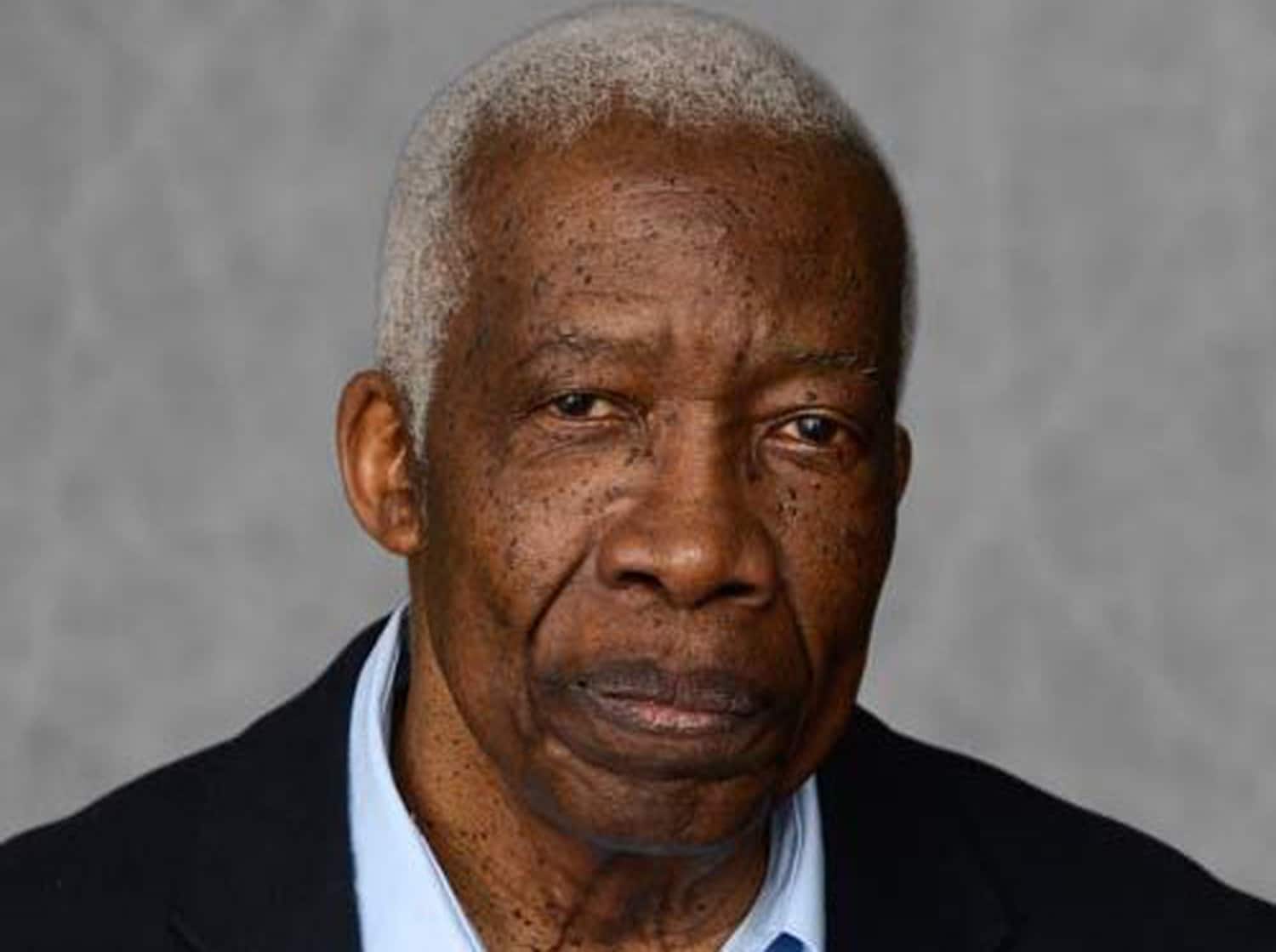Connecting Your World With Your Health
For researchers in the Center for Human Health and the Environment, science is a community effort.

When hundreds of residents of Durham’s McDougald Terrace public housing complex needed answers about how dangerous carbon monoxide levels could make them sick, NC State got the call.
The university’s Center for Human Health and the Environment (CHHE) worked with Legal Aid of North Carolina to hold information sessions and answer worried residents’ questions about the carbon monoxide, and other toxic substances like mold, that were found in the complex. Residents were evacuated while repairs were made.
For researchers in CHHE, aiding communities around the state is a regular part of their job. Recent activities have included helping Wilmington residents better understand the chemicals in their drinking water and holding a Q&A in a Raleigh food hall about the dangers of vaping.
“One of the biggest pieces of our work is making connections with real people and groups,” said Katy May, co-director of the center’s Community Engagement Core. “That allows us to help with problems in the community more quickly and efficiently.”
Responding to Community Concerns
CHHE is, first and foremost, an interdisciplinary research center where faculty and student researchers work to better understand environmental effects on human health. The center brings together investigators from many disciplines, including genomics, human and veterinary medicine, epidemiology, exposure science, statistics, bioinformatics, genetics, cell biology, physics, engineering, community engagement and toxicology. But because it is a National Institute of Environmental Health Sciences (NIEHS) Environmental Health Sciences (EHS) Core Center, bringing that expertise into the cities and towns is also central to CHHE’s mission.

“Our work in the community has helped people relate to scientists and science,” said Cathrine Hoyo, an NC State molecular epidemiologist and co-director of CHHE’s Integrated Health Sciences Facility Core. “We help take what the population sees and explain it.”
One way CHHE is doing this is by helping people understand what could be in their drinking water. In 2017, Jane Hoppin, an environmental epidemiologist and CHHE’s deputy director, began assessing exposure to GenX and related chemicals released into the Cape Fear River — a primary drinking water source for Wilmington — by a Fayetteville-area manufacturing plant.
“We help take what the population sees and explain it.”
As the study’s principal investigator, Hoppin has traveled to Wilmington and Fayetteville to recruit volunteers; collect blood, urine and water samples; and hold community meetings to discuss results with residents.
“To build trust with community members, it’s important to keep them informed about what we find,” Hoppin said. To that end, she regularly fields questions from study participants and other residents concerned about potential cancer clusters or other health threats. She shares study findings through letters to participants, regular updates to the project’s website and interviews with national and local media outlets.

Hoyo is doing similar work elsewhere in the state. She’s studying Durham residents’ exposure to the metal cadmium, which humans can consume through drinking contaminated groundwater, eating crops grown in contaminated soil or smoking cigarettes, among other ways. Once inside the body, cadmium acts as a carcinogen with potential health effects on kidneys, lungs and the skeletal system. The World Health Organization has identified exposure to the metal as a major public health concern.
Hoyo and her colleague and fellow center member Mike Cowley are trying to understand how cadmium exposure early in human development can influence risk of disease risk later in life.
“Sharing our results with the Durham community and helping them understand methods of reducing exposure has been a big part of this study,” she said. Hoyo has also been appointed to North Carolina’s Cancer Research Advisory Panel to help develop guidelines on how the state will respond to concerns about cancer clusters.
A Strong Foundation
CHHE is one of about 25 EHS Core Centers in the United States and one of only two established at a university without a medical school or school of public health.
“We’re proving that you don’t need to have patients to do biomedical research,” said Rob Smart, Goodnight Distinguished Chair in Molecular Toxicology in the Department of Biological Sciences and CHHE’s founding and current director. “What you really need is strong science that can shed light on the underlying basis of environmentally induced disease and adverse health outcomes.”
World-class faculty researchers are driving this important work, but students — from first-year undergraduates to doctoral candidates — are alongside them every step of the way.
“Students are a big part of everything we do in the center.”
“Students are a big part of everything we do in the center,” Smart said. “From studying molecules all the way to working in communities, students are plugged in.”
Zoe Lindsey-Mills, a fourth-year student majoring in genetics and minoring in biotechnology, has worked in Smart’s lab since her first year at NC State. After reading a paper his research team had published, she approached him to discuss it, and he offered her a position in his lab.
Lindsey-Mills’ research has focused on understanding DNA’s response to damage from ultraviolet radiation. She’s been an active part of the lab’s work, performing experiments, mentoring other undergraduates and presenting posters at two research symposia.

After graduation, Lindsey-Mills wants to become a genetic counselor. “My work in the lab has helped me have a solid understanding of science so I can clearly communicate the genetic aspects of disease to people,” she said.
In the lab of geneticist and co-leader of CHHE’s Environmental Epigenetics and Genetics Research Interest Group David Aylor, third-year student Nikhil Milind analyzes biological data to understand the genetics of immune responses in the lungs. Milind, a genetics and computer science double major and a recipient of the prestigious Goldwater Scholarship, will present a poster with his lab at the Allied Genetics Conference in April and is working on a journal article as well. He also interned with a lab in Maine for two summers doing Alzheimer’s research.
“My work in the Aylor Lab is definitely preparing me to handle complex scientific questions,” he said.
One of his lab colleagues, functional genomics Ph.D. student Jackson Parker, agrees. “The mentorship that I have received and the work that I have been a part of will help me adapt and do my best work, no matter where I end up after I finish my degree.”
Science for Everyone
As part of its outreach mission, the center offers public events, education programs and funding opportunities to engage the public in science.
For the past two summers, CHHE has partnered with NC State’s College of Education on a summer environmental health professional development program for science teachers in high-poverty high schools. The eight-week program brings these teachers into campus labs for research experiences, as well as educational and outreach training, all with the goal of helping them better understand how environmental health research is conducted and how to teach it to their students.

CHHE also has a Community Grant Program that provides funding and technical assistance to help educators, nonprofits and community groups across the state address environmental health issues in their communities.
Marisa Ramos-Mason, a public health educator for the Cumberland County Department of Public Health, said the $8,000 CHHE grant made it possible for the department to partner with North Carolina Healthy Homes for an allergy awareness program. The program included workshops to help families learn how to mix simple green cleaning solutions for use in their homes.
“We have a really limited budget in health education, so we wouldn’t have been able to do this otherwise,” she said. “We jumped on the opportunity to help children in our community and prevent chronic illnesses.”
A few years ago, the center launched Beer-Reviewed Science, an opportunity for community members to learn more about an environmental health topic over food and drinks. Vaping and chemical exposure have been among the topics.

“We’re answering real questions people have,” May said. “These events have helped engage the community and also given our scientists experience in sharing their work with nonexpert audiences.”
Breadth and Depth
Pokemon Go isn’t a topic you’d expect to hear about at a health research conference. But at CHHE’s annual research symposium in February, Aaron Hipp, a member of the center, described his study on activity patterns of players of the augmented reality game.
As part of his research on how human-made environments affect public health, Hipp looked at how much the game got people outdoors using public spaces and engaging in physical activity. He has also studied how low-income children use public parks and which types of environments are best for recovering from stress.
Hipp’s presentation, alongside those of toxicologists and neuroscientists, illustrated the interdisciplinarity that is a hallmark of the center, which includes 70 members from 13 departments and six colleges at NC State. Around half of the center’s full members are from the College of Sciences; others are from the colleges of Veterinary Medicine, Agriculture and Life Sciences, Humanities and Social Sciences, Engineering, and Natural Resources. The center also has members from East Carolina University’s Brody School of Medicine, North Carolina Central University and the N.C. Department of Health and Human Services and partners with a number of state and federal organizations.

“This center brings together faculty with diverse backgrounds and interests in environmental health science at NC State and beyond,” Smart said.
“We’re able to be so nimble in responding to emerging issues because of the breadth of our focus,” May said. “We want to help people be able to make informed decisions about what they’re exposed to so that they can reduce those exposures and improve their health.”


